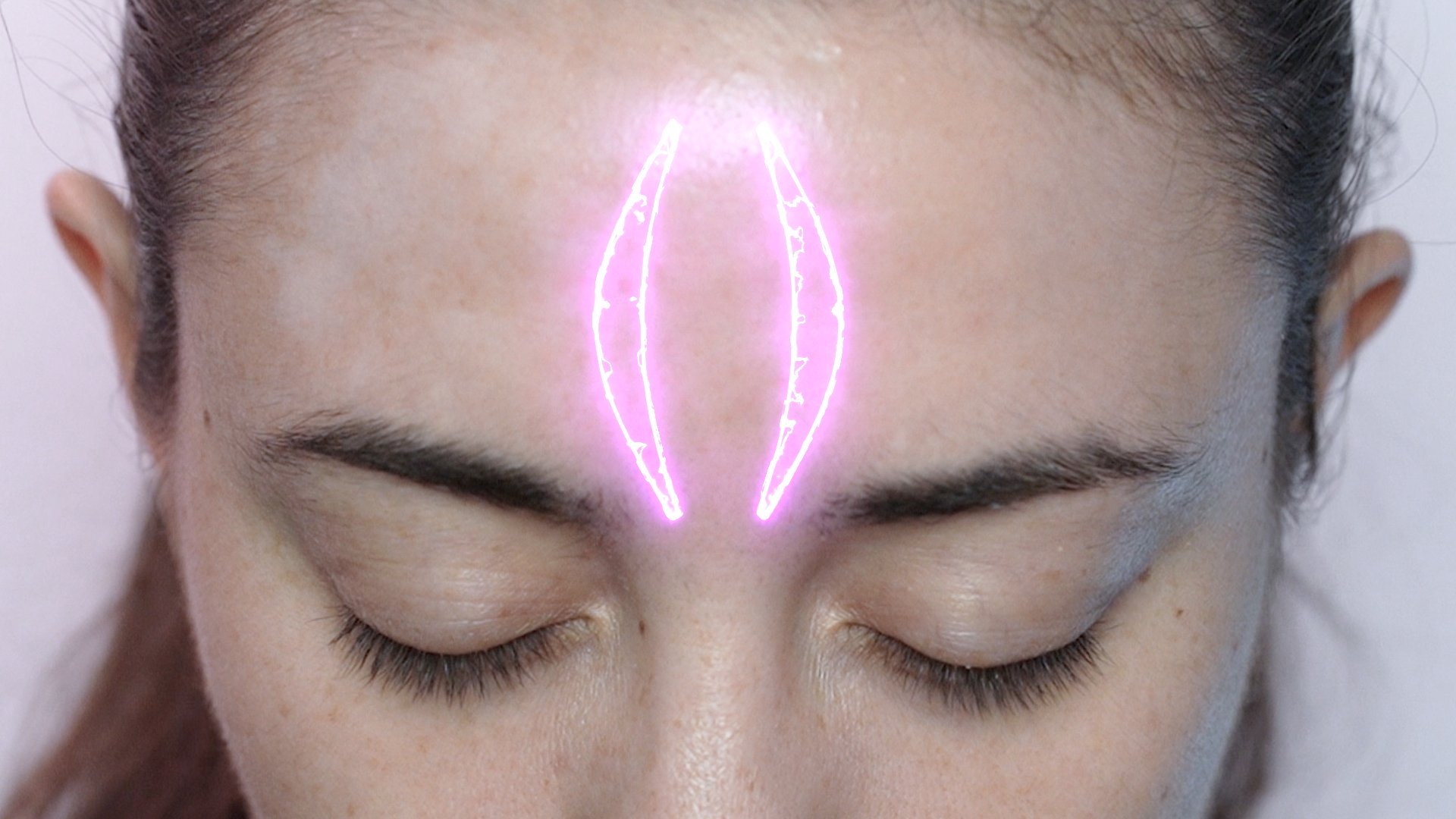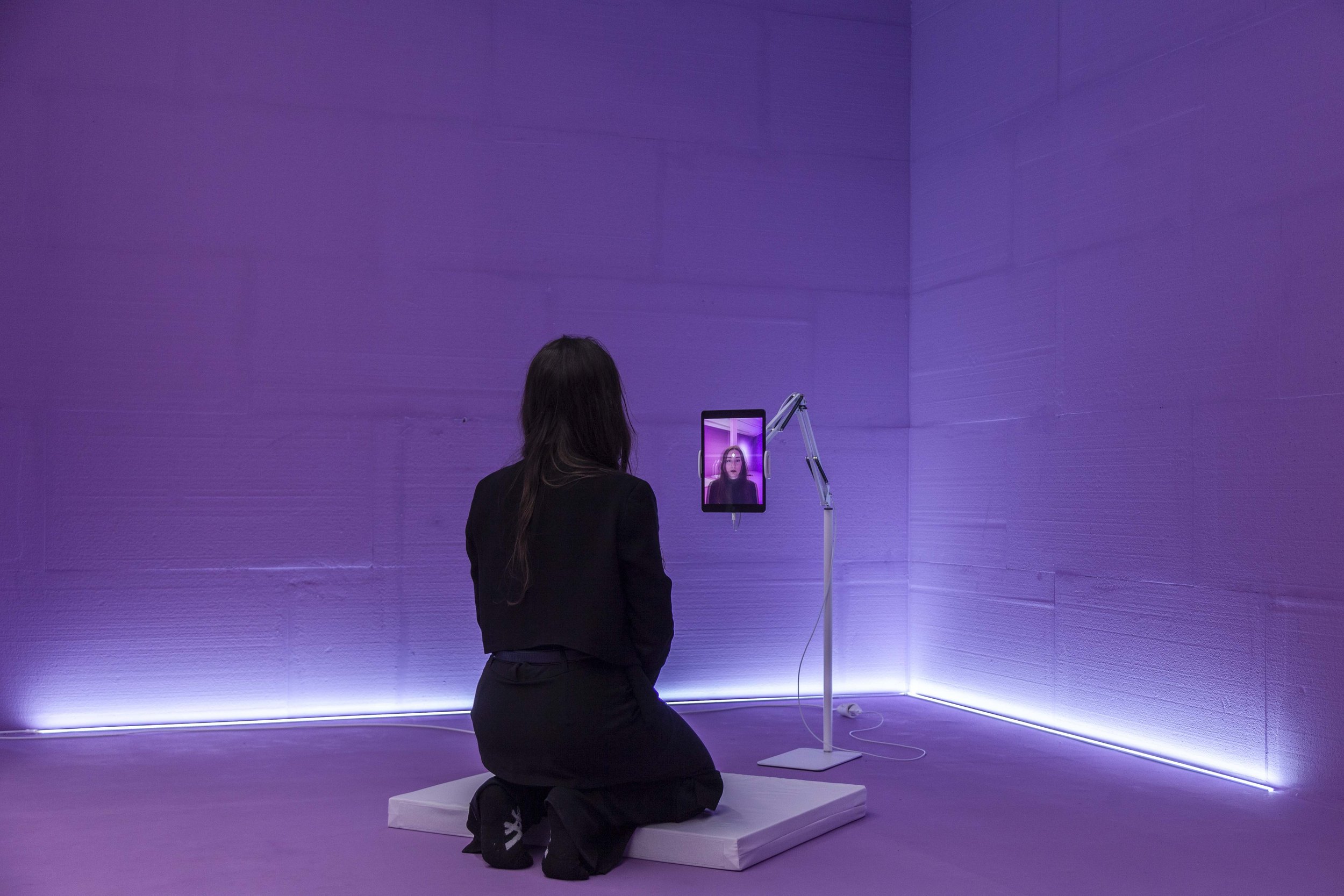S()fia Braga
S()fia Braga and art in the virtual dimension: on the potential to challenge dominant narratives by crafting counter-realities, new possibilities and re-definitions of the world order we assume exists.
Transmediality in art is a practice of interconnectedness and tentacular thinking. S()fia Braga’s art takes cue from Net Art and declines it to the contemporary mediascape where the digital and post-digital conditions highly impact on human interactions. Her social-driven practice is informed by both lights and shadows of the post-digital, specifically in relation to the AI discourse, an ongoing buzz word and critical matter. Through transmedia storytelling the artist is able to delve into speculative transhumanist exploration, aiming to advance our understanding of the human body’s capacity to achieve lifelong emotional well-being.
What does it mean to be a transmedia artist?
As a Transmedia Artist, I am interested in embracing diverse and interconnected forms of media in a total freedom that allows me to transcend limitations and boundaries. In my artistic practice, I intertwine various disciplines that blend across different platforms, from digital realms like social media to physical exhibition spaces, while at the same time disrupting and subverting their conventional functions and perceptions. For example, an exhibition space transcends its traditional role and transforms into a sacred ground for transhumanist research, while Instagram stories unfold as screens for showcasing films, and many more. The boundaries blur as I explore new possibilities, reimagining how these spaces can be experienced and utilized. In my works, the role of the audience also undergoes a shift as they transmute into performers observed by machines, while the machines themselves become the spectators.
I do not like to confine myself to a single context, and instead, I strive to occupy the spaces in-between, pushing the boundaries of categorization, defying stagnation. My aim is to reach a vast and diverse audience, observing how their knowledge and experiences influence their individual reactions to my work.
AI and social media platforms are consistent tools for your artistic research. How so?
The decision to work with these tools primarily arises from my interest in challenging established structures and the prevailing narrative, as social media platforms and AI are predominantly employed as instruments of control.
Today’s misconceptions surrounding AI, and its tendency to become even more of a black box as it advances, consequently lead to an animist, almost magic-like, perception towards algorithms, while the fact that these technologies are developed by the human mind is being overlooked in the face of the worldwide crises we are experiencing. People in power at tech monopolies build their narratives around technology in a way that gives responsibility and agency to it, whereas the ethical implications rely on the ones that are developing, monitoring, using, and taking advantage of said technologies.
In this context the fields of artificial intelligence and machine learning find themselves in a very critical position: on the one hand AI holds the potential to be utilized on the way to human self-realization by enhancing human agency and increasing societal capabilities, while on the other hand, the misuse of these algorithms by Big Tech corporations as data scrapers are already gaining more control over people, consequently undermining human self-determination. And in my own practice and research, this context has always been relevant and reflected upon.
Secondly, I’m interested in exploring the relationship between human agency, the machine gaze and algorithmic agency, as well as the potential of collaboration between humans and non-human entities.
When working within social media platforms, users and algorithms become integral participants in the creative process, contributing to its unfolding narrative. This reflects the underlying power structures connected to the theme of Interveillance, which is a consistent topic in my artistic research as well.
Within my AI exploration, particularly in my latest AI-generated movies, I strive to strike a balance between granting freedom to the machine and maintaining creative direction. Even though, behind the scenes, I collaborate with an AI system architect to develop custom software and invest significant time in researching and selecting the most suitable upscaling and interpolation algorithms. While I give the machine the space to generate frames, I carefully oversee the overall script and concept. If certain outcomes do not align with my vision, I persistently rerun the machine, change and fix scripts, prompts, parameters, and so on.
And how do you relate to social media in the quest to build your own avatar?
In my work I emphasize identity and labels more than avatars, and this exploration goes beyond social media platforms. Identity is a fluid and ever-changing concept that cannot be fully grasped. It involves a continuous and sometimes tiring journey of self-discovery, uncovering hidden potentials while navigating the complexities of the world. However, seeking identity is also about asserting oneself within society, and today, social media play a significant role in this process.
Within my projects, I constantly strive to bring life to questionable and ambiguous identities. The self is never idealized, as it would be in the creation of an avatar, instead, it is profoundly influenced and shaped by the systems in which it exists. These systems often taint and corrupt the essence of one’s identity, presenting complex layers of authenticity and artifice that demand examination and critique.
I’d like to deepen the concept you mention in your statement: “interveillance”. What is it exactly?
Interveillance emerges as a new form of surveillance enabled by the operational structures of centralized social media platforms. It capitalizes on our human need for self-determination, turning users into both subjects and objects of power alongside the non-institutional agencies that operate on the Internet. It is a participatory and horizontal surveillance that leads individuals to actively monitor and regulate each other’s behaviors in a reciprocal manner.
In this way, users actively participate in these covert power dynamics, diverging from the traditional and hierarchical forms of control that is based on the repression of physical bodies. Instead, the emphasis shifts towards prevention by influencing beliefs and behaviors through identification processes, ultimately manifesting as viral trends.
These research topics resonate in many of my works, particularly in “I stalk Myself more than I Should”, where I delve into the manipulative nature of Instagram stories, uncovering the widespread misconception surrounding the disappearance of data. While users assume that information is permanently deleted, it is actually stored within the platform’s databases. Consequently, the illusion of vanishing content fuels a substantial increase in the production of intimate and personal data. This erosion of privacy results in a profound collapse of personal boundaries, as even the most intimate human experiences are transformed into valuable behavioral data.
Furthermore, in the project “A Study on the Characteristics of Douyin”, created in collaboration with artist Matthias Pitscher, we ventured beyond the Chinese Firewall, a series of legislations to regulate the internet domestically, to explore censorship and control within the Chinese social media platform Douyin, the original version of TikTok.
Despite your many identities and narratives that characterizes both you and your work - an artist, a transhumanist entrepreneur, an AI auteur, a cyberstalker, a TikToker, a monstrous creature - what is it that glues your artistic work(s)?
My main drive is to disrupt and reshape the prevailing narrative surrounding technology and its far-reaching impacts. This involves subverting the established dynamics of existing platforms, as well as envisioning speculative fabulations that portray technology as tools of care and enhancement.
Could you expand on your most recent exhibition at Galeria 17 in Pristina Forehead Vulva Channeling Research? What’s the narrative behind this quite already-explicative title?
“Forehead Vulva Channeling Research” is an ongoing project that began in 2021 as a Transmedia storytelling experience, incorporating online performances, Augmented Reality, and immersive installations.
The work delves into speculative transhumanist exploration, aiming to advance our understanding of the human body’s capacity to achieve lifelong emotional well-being. This is accomplished through a re-calibration of pleasure centers by channeling hidden organs through the use of specialized technologies. By unlocking the potential of the Forehead Vulva, the research seeks to liberate the body and uncover new dimensions that remain undiscovered by humanity.
The project initially took shape with a series of Augmented Reality Face Filters, which generated an unexpected engagement and participation online. The release of the first AR Forehead Vulva channeler resulted in over 250.000 impressions and 10.000 captures in just one day, transforming the experience into a collective online performance. Afterwards, the project has been exhibited at various venues, including the Ars Electronica Festival 2022 in Linz.
As you enter the Forehead Vulva Channeling Research solo show at Galeria 17 in Pristina, presented by Ars Electronica Export and Foundation 17, you find yourself immersed in a unique environment that bridges the realms of sacred rituals and a sterile laboratory, reminiscent of a futuristic sci-fi setting.
Visitors are invited to either lie down or take a seat at one of the four designated channeling stations. Assuming a meditative posture, they are encouraged to direct their gaze towards a suspended screen positioned above them. It is on these screens that individuals can witness a digital augmentation of their own Forehead Vulva.
Within the exhibition space, an introductory video provides insights into the research and techniques employed for the channeling process. The convergence of spirituality and scientific inquiry blurs the boundaries between reality and fiction, leaving the audience contemplative and often questioning the nature of their surroundings.
By exploring the potential of technology, the project aims to reshape our perception of the body, utilizing digital augmentations to create hybrid identities. Through this process, conventional notions of the body and its way of performing are challenged and disrupted, paving the way for new perspectives and possibilities.
Talking about “channeling”, what do you believe the virtual dimension’s able to channel?
The virtual dimension offers us the potential to challenge the dominant narrative by crafting novel realities that channel transformative possibilities, enabling us to redefine not only ourselves but also the world we inhabit.
interview ILARIA SPONDA
What to read next


















